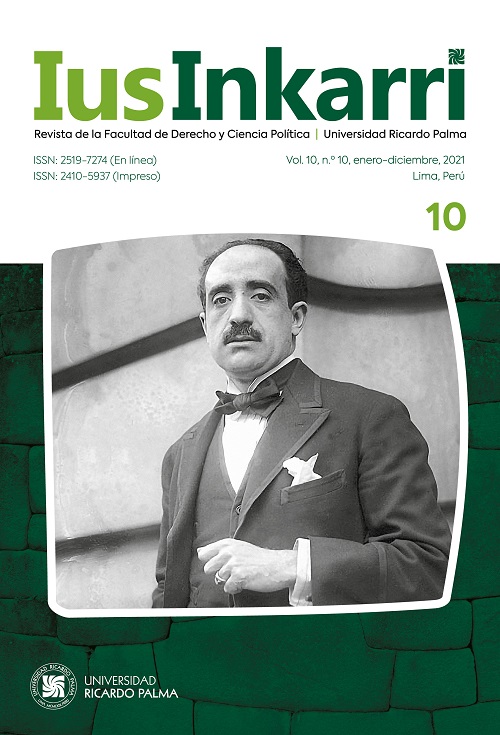The compliance with the constitutional purpose of punishment in the Peruvian prison system. Utopia or reality?
DOI:
https://doi.org/10.31381/iusinkarri.v10n10.4647Keywords:
punishment, prevention, reintegration, prison treatment, human rights, human dignityAbstract
The rule of law is built on a reasoned set of values and principles that are protected around a supreme principle: the dignity of the person, with this it must be understood that the person as a complex entity can never lose the value of dignity and any institution that regulates people’s lives must safeguard this value. The penalty is not the exception, since its application should not exempt the defendant from worthy treatment and therefore its supreme purpose is precisely the reintegration into society of the person who has broken the legal status quo. This article will not only carry out an exhaustive historical account of the precedent and treatment in Peru, but will also confront in the light of the figures. In other words, how effective the Peruvian system is in achieving, and what is an obligation according to our constitutional order: guarantee reintegration and resocialization of the inmate.
Downloads
References
Arendt, H. (2007). La condición humana. EDUUY.
Banco Interamericano de Desarrollo (2015). Programa de Tratamiento C. R. E. O. y F. O. C. O. S - Perú. INPE.
Bentham, J. (1830). The rationale of punishment. Prometheus Books.
Burgoa, C. A. (2011). La deóntica jurídica como clave en la interpretación de leyes fiscales. UNAM.
Comisión de Investigaciones de la Asociación Civil Foro Académico (2015). Perú: donde el ser humano es un medio y no un fin (el caso de los centros penitenciarios). PUCP.
Custodio, G. (2016). Teorías absolutas de la pena. Universidad Ricardo Palma.
Durán, M. (2011). Teorías absolutas de la pena: origen y fundamentos. Universidad de Salamanca.
Feuerbach, P. (1847). Lehrbuch des gemeinen in Deutschalnd gultigen peinlichen Rechts. Guessen.
Jakobs, G. y Cancio Meliá, M. (2003). Derecho penal del enemigo. Civitas.
López, L. (2014). Apuntes sobre la prevención especial o individual de la pena. Universidad de San Martín de Porres.
Mir Puig, S. (1976). Introducción a las bases del Derecho Penal. Bosch.
Morales, M. (2016). La incidencia de la gestión privada de los establecimientos penitenciarios en la resocialización de los sentenciados a pena privativa de libertad efectiva desde una óptica del penal San Joaquín de Quillibamba. Universidad Andina del Cusco.
Organización Mundial de la Salud (OMS) (1946). Constitución de la Organización Mundial de la Salud.
Platón (1910). Discurso de Protágoras. NoBooks.
Reyna, L. (2004). Fundamentos de derecho penal económico. Ángel Editor.
Rodríguez, D. (2019). Teoría de la pena. Eunomía.
Zaffaroni, E. R. (1997). La filosofía del sistema penitenciario en el mundo contemporáneo. Themis. Revista de Derecho, (35), 179-191.
Downloads
Published
How to Cite
Issue
Section
License
Copyright (c) 2021 Nancy Noemí Guerrero Muñoz

This work is licensed under a Creative Commons Attribution 4.0 International License.













